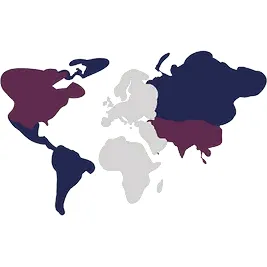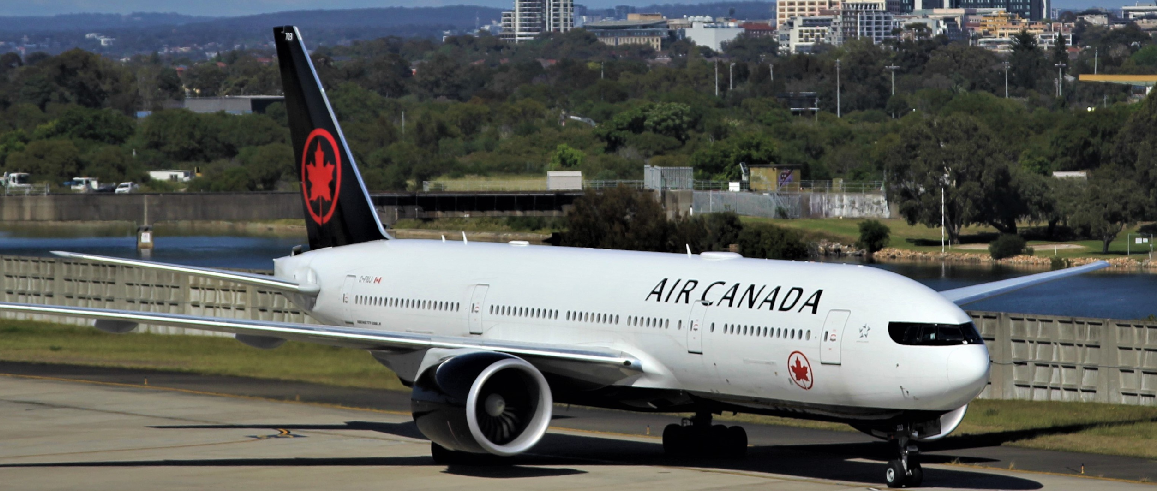Nafta Intra-company Transfer
Citizens of the United States and Mexico may come to Canada under the USCMA or NAFTA Intra-company work permit without obtaining a Labour Market Impact Assessment (LMIA).
Call IAS on 0333 305 9375 for assistance obtaining a USCMA Intra-company work permit or advice.
Read our 1001 reviews
Request a call back from our immigration experts
Benefits of Choosing IAS‘ Canada Immigration Lawyers
When it comes to obtaining a Canada visa or permit, IAS Canada immigration lawyers are well-equipped to help you.
With IAS’ track record of successfully helping clients visit or immigrate to Canada successfully, we can help you achieve your goal.
Our dedicated immigration lawyers provide our services through a comprehensive and personalised approach. With IAS, you enjoy:

Compassionate support from an experienced immigration lawyer dedicated to your success



Support in gathering supporting documents and completing a high-quality application.



Confidence that your case is being handled by an experienced team.



In-house document checks done by lawyers who are well-versed in immigration matters.
Services we Provide
What is the NAFTA Intra-company Transfer Program?
The NAFTA ICT facilitates the transfer of employees handling specialised occupations between Canada, the United States, and Mexico. The NAFTA-ICT program is suitable for owners of multinational companies and key workers who plan to work in either an affiliated or start-up Canadian company.
Who are Qualified for the NAFTA Intra-company transferees program?
The intra-company transferee program is a work transfer scheme where an eligible employee may transfer from a parent company abroad to a branch company in Canada. The applicant and the companies must meet the following criteria to qualify for this program:
- Must be a citizen of Mexico or the United States.
- Must work with a multinational parent company and be assigned to work in the enterprise’s parent, subsidiary, branch, or affiliate in Canada. The intra-company transferee will work at the Canadian company that operates as a legitimate continuing business.
- The applicant is seeking a position in an executive or managerial capacity or has the qualifications to pass on specialised knowledge to the Canadian company.
- The applicant is transferring to a company in Canada with a qualifying relationship with the parent company where they are currently working.
- The applicant must have held a similar full-time position for a minimum of one year within the three years immediately preceding the application date. The applicant must be employed full-time within the previous three years, starting from the date of initial application.
- The applicant intends to come to Canada temporarily and must comply with the requirements for temporary entry.


Intra-company Transfer Categories
To qualify under the intra-company transfer program, a foreign worker must fall into one of the following three categories:
Executives
They are employees who hold an executive position must meet some or all of the following criteria to qualify for the intra-company transfer visa:
- In charge of directing the company’s management, one of its functions, or one of its major components
- Develops organisational goals and policies, including their components and functions
- Is in the position to exercise broad discretion in decision-making
- Works under the directives of higher-level executives, board of directors, or stockholders, but only in terms of general supervision or direction
An employee must engage in managerial or executive duties to qualify as a manager or executive under this category. To qualify as an executive under the intra-company transfer, an employee must prove the ability to make decisions with a broad scope but minimal oversight.
Senior Managers
Under the intra-company transfer, a holder of a Senior Managerial position performs some or all of the following tasks:
- Manages the organisation, a department, a subdivision, function, or one of its components
- Supervises and controls the work of other managers and professional employees
- Manages key functions within the organisation, one of its departments or its subdivision
- Hires, fires, or recommends personnel actions, such as promotion and leave authorisation.
- When the senior manager does not directly supervise an employee, the function must be at a senior level within the organisational hierarchy to qualify as a senior managerial position.
- Exercises responsibility over the day-to-day operations of the activity or function under the employee’s authority
In executive and managerial positions, employees are generally responsible for organising, directing, or controlling the business activities of one of its divisions. They typically perform their duties independently or through middle managers’ support.
An example of an employee who manages a particular function is the Vice President of Marketing. An employee who holds this function oversees the department’s marketing strategies and efforts.
Senior employees perform tasks that often involve the formulation of policies and guidelines for the business.
Employees with Specialized Knowledge Capacity
The duties of an intra-company applicant require specialized knowledge. An ICT applicant with Specialized Knowledge must demonstrate a high degree of both the following:
- Knowledge at an advanced level of expertise and
- Proprietary knowledge of the company’s product, service, research, equipment, techniques, or management.
According to the IRCC, proprietary knowledge is company-specific expertise related to the company’s products and services. It means the business keeps the knowledge intact and has not divulged necessary specifications that may allow others to copy and compete against the products and services.
Some occupations that may require proprietary knowledge are scientific researchers, engineers, computer programmers and systems analysts, financial auditors and accountants, and marketing specialists.
On the other hand, an ICT applicant can prove an advanced level of expertise by demonstrating substantial experience in the field.
Documentary Evidence of Specialized Knowledge
An applicant must provide evidence of meeting the IRCC standard regarding the definition of specialised knowledge. Documentary evidence may include but is not limited to the following:
- A resume and reference letters
- Letter of support from the company
- Job descriptions outlining the level of training
- Years of experience in the particular field
- Degrees and certifications obtained
- Evidence of publications and awards
- A detailed description of the work to be performed in the Canadian branch.
Moreover, despite the temporary employment in Canada, the applicant remains an employee of the parent company, working under its direct and continuous supervision.


What Visa Officers Look For to Confirm Specialized Knowledge
Visa officers processing applications for the intra-company transferees employ rigorous methods to assess specialised knowledge. They are likely to look at the following elements:
Occupation
The visa officer determines whether the position is listed under the National Occupational Classification (NOC).
Typically, officers use the NOC system to assess the job category and determine the expected responsibilities of the foreign worker in Canada. The intra-company transfer position in Canada must be under a NOC level similar to the applicant’s home position or higher.
The visa officers will also use the occupational classification to determine if the salary reflects specialised knowledge. And while the IRCC does not require specialised knowledge applicants to meet specific NOC criteria, they are in an excellent position if they can prove that their expertise belongs to high-skilled NOC codes.
Education
The applicant must provide proof of educational credentials if the position requires a specific level of education.
Experience
The officer considers various factors in assessing the experience level of an intra-company transferee applicant under the specialised knowledge category. The officer is likely to look into the following elements:
- Applicant’s years of experience with the parent company
- Applicant’s years of experience in the industry
- The duration of experience required actually to acquire the said level of specialised knowledge
Generally, employees develop specialised knowledge the longer their experience in the company and the industry. However, even a foreign worker with only one 1-year of experience with the parent company may still qualify under the specialised knowledge category.
The applicant must demonstrate a comprehensive knowledge of the particular facet of the business. The foreign worker may have acquired expertise through work experience and studies in the appropriate field.
Training
Applicants under the specialised knowledge category hold themselves as having special skills. This means the host company may no longer provide training in the area of expertise.
The employee must not receive specialised training from other employees within the host company. Other employees within the host company must not provide specialised training to the specialised knowledge worker as this is likely to result in the displacement of Canadian workers.
Duration of Employment
The duration of employment in the host company should not influence the opinion of the visa officer. Even a three-month job offer may require specialised knowledge and benefit other employees and the Canadian company.
Mandatory Wage Floor
The officer will also look into the salary or wage of the applicant while employed in the parent company. The general expectation is that an employee with specialised knowledge must receive compensation consistent with a specialist’s.
The officer uses an established salary baseline to assess the application’s merit.
How to Find Your National Occupational Classification (NOC) Code?
Intra-company transfer work permits applicants must fall under the National Occupational Classification Code (NOC) O, A, or B. Employment and Social Development Canada offers a view matrix of the entire NOC structure on its website.
You can search the NOC matrix by putting in your industry, job titles and other relevant keywords. Ensure that the lead statement in the NOC matches your job description and that your tasks include most of the duties and responsibilities provided under the NOC code.
It is also essential to pay close attention to the exclusions in the NOC code. Avoid claiming an occupation with a job description that matches a particular NOC code but also seems to match an exclusion.
Regardless of the NOC code, applicants must prove that it matches their occupation. In addition, choosing the NOC code that matches your occupation is essential if it matches two or more NOC codes.
Remember that the visa officer is highly familiar with the NOC code matrix and may refuse your application if your job description best fits a different code.
An IAS immigration lawyer can help you accurately select the NOC code that best suits your occupation. Our immigration lawyers have a detailed knowledge of the NOC code matrix and can advise you on which code is most appropriate for your job description. This ensures that your visa application is more likely to be successful.
Canadian and Foreign Companies Qualifying Relationship
A qualifying relationship is one in which a parent company owns or controls a subsidiary or branch. The foreign parent company and the Canadian enterprise must be in a parent, subsidiary, branch, or affiliate relationship.
For example, if a Canadian company is a subsidiary, the international company either owns 50% of it or, possibly, less than 50%, but in that case, controls the Canadian subsidiary. Canadian affiliate means that Canadian and foreign companies are subsidiaries of a larger parent company. A Canadian branch is an operating division or office of the same international company housed in a different location.
In addition to meeting the ownership requirements, the Canadian subsidiary must also be doing business in Canada. This means that the company must have a physical presence in Canada and generate income from activities conducted in Canada. The Canada Revenue Agency will also consider whether the company has made significant investments in Canada, such as hiring Canadian employees or establishing manufacturing operations in Canada.
Note that the mere presence of an office or agent in Canada does not pass for a qualifying relationship. The parent company and its branch in Canada must regularly and continuously provide goods and services, with 18 to 24 months as a reasonable minimum guideline.


Requirements for the Parent Company
Immigration officers will assess if the company has a business plan in place. This business plan should outline the company’s goals and objectives and how it plans to achieve them.
The company should also have a solid track record of success in its home country, showing that it can succeed in Canada. The foreign parent company should have the financial resources to support its expansion into Canada.
Moreover, a foreign parent company that wishes to transfer its employees to its Canadian branch, subsidiary or affiliate must meet the following requirements:
- The parent company must have a branch, subsidiary or affiliate in Canada; otherwise, it must be a new start-up, and the intra-company transferee will hold a senior manager or executive position. In the case of start-ups, the business may use a counsel’s address until completion of purchase or lease of business premises;
- The company must have solid, feasible plans on how it will start the new operation;
- The business must prove financial sufficiency. It must provide an adequate resource to start and conduct business and to pay wages to its employees in Canada.
- The company must show proof of its capacity to support executive or management activities if it plans to transfer executives or managers.
- The company must show proof that it will be doing business and ensure that work is appropriately guided and directed at the Canadian branch if it plans to transfer an employee with specialised knowledge.
Some of the evidence to prove that the company is doing business in Canada includes:
- Annual reports for public companies
- Articles of incorporation
- Profits and loss statements
- Partnership agreements
- Licenses to do business.
The NAFTA Professional Work Permits
Overview
Business persons from the U.S. and Mexico may benefit from the NAFTA work permit if they want to work in Canada. Under this permit, the business person may enter Canada to provide pre-arranged professional services to a Canadian company.
Temporary Entry for Business a Person
The NAFTA professional work permit applies to selected business persons seeking temporary entry to Canada. The permit does not affect plans to seek permanent residency, as the IRCC issue the work permit assuming that the applicant does not intend to establish Canadian permanent residence.
According to the IRCC, temporary foreign workers under NAFTA may work in a temporary or permanent position in Canada. However, the IRCC clearly expressed that people planning to immigrate to Canada may not use NAFTA to stay in Canada indefinitely.
Admission Decisions
The visa officers assess all applicable mechanisms and requirements for temporary entry of U.S. and Mexican citizens into Canada. The officer will decide considering the main objective of NAFTA, which is to facilitate the trading relationship between Canada, Mexico and the U.S.
Remember that a U.S. or Mexican citizen who does not qualify under the provisions of NAFTA may still be eligible under other conditions governing temporary foreign workers. They may want to see if they qualify under the General Agreement on Trade in Services (GATS) or Other Free Trade Agreements (FTAs).
Duration of Work Permits
The IRCC typically grants an initial one-year work permit duration for intra-company transferees. However, most IAS clients were granted two years for their work permits, saving their employers time and money from re-submit an application for the same employee.
The work-permit holder and the company must demonstrate the following if they wish to extend or renew the work permit:
- The Canadian and foreign parent company still maintains a qualifying relationship.
- The new office has engaged in the legitimate and continuous delivery of goods or services in the past year
- The new Canadian office currently employs a staff.
Essential Tips When Applying Under the NAFTA ICT Program
Visa officers often refused a NAFTA ICT application due to insufficiency of documents. For example, the parent and subsidiary company failed to sufficiently demonstrate the relationship between them or an applicant’s job duties didn’t match the North American Industry Classification System (NAICS) code for their position.
To avoid having your application denied, take note of the following tips:
- Include all required documents. The documents needed may vary depending on the program you are applying for. Still, generally, you will need to submit evidence of your citizenship, proof of employment offer or contract, and documentation demonstrating that you meet the qualifications for the position.
- Make sure that your job duties match your occupation. Your job duties should align with the occupation description in the NAFTA list.
- Be prepared to show ties to your home country. Visa officers will want to see that you have strong ties to your home country and will return there after your stay in Canada. This may include, but is not limited to, documentation such as property ownership, family ties, and financial assets.
- Have a detailed employment offer or contract. Your employment offer or contract should outline your job duties, salary, and other terms and conditions in Canada.
- Prove the relationship between the parent and subsidiary companies. Include documentation such as business licenses, articles of incorporation, and tax returns.
- Have a detailed employment contract. The employment contract should include information about your job duties, salary, and other terms and conditions of employment.
- Be prepared to show ties to your home country. Visa officers may want evidence of strong ties to your home country, such as property ownership, family ties, or ongoing business interests.
- Be prepared to show that you will comply with the terms of your visa. Visa officers may want evidence that you have enough financial resources to support yourself during your stay in Canada.
- Be honest and upfront about your application. Do not try to hide any information or misrepresent any facts, as this will only result in a denial of your application.
Submit necessary documents, but do not include unrelated documents in your application. Focus on providing complete and well-organised evidence to make it easier for the visa officer to assess and process your application.
What is NAFTA?
Overview
The North American Free Trade Agreement (NAFTA) was a 1994 agreement between the U.S., Mexico, and Canada. The three countries created this free trade agreement to liberalise cross-border trade by abolishing tariffs and other trade barriers.
The NAFTA paved the way for a two-sided agreement establishing common standards regarding labour rights, workplace safety, and environmental protection. One of the goals of this agreement is to prevent enterprises from relocating and possibly exploiting lower salaries and looser business regulations in another country.
Before NAFTA, Canada and the U.S. had an established Free Trade Agreement (FTA). The two countries included Mexico under NAFTA to encourage increased economic activities among North America’s three major economic powers.
What Became Possible with NAFTA?
- NAFTA clears the way for temporary entry of citizens from the U.S., Canada, and Mexico, provided they are business individuals engaged in the trade of goods and services or involved in investment activities.
- NAFTA eliminates the need for all business people covered by the agreement to secure a Labour Market Impact Assessment.
- Under the agreement, a business visitor may not need to book a work permit.
- NAFTA expedites the application process of professionals and intra-company transferees. NAFTA work permit applicants may apply at a Canadian visa office prior to arrival or submit their application at the port of entry (POE).


The UMSCA Replaced NAFTA
The United States-Mexico-Canada Agreement (USMCA) replaced NAFTA in July 2020. The labour mobility provisions of NAFTA will continue under the UMSCA. Some business persons and skilled professionals entering Canada remain exempt from securing a positive Labour Market Impact Assessment (LMIA).
While USMCA altered several facets of NAFTA, the new agreement did not affect Canada’s requirements and processes for acquiring an intra-company transfer permit. However, additional guidelines and compliance requirements may arise as developed. For example, the three countries created the NAFTA before the rise of the technology industry, and updates are most likely to cover important technology positions.
The experienced immigration lawyers at IAS can help applicants for intra-company transfers to Canada navigate the possible changes and updates to the UMSCA provisions.
Our immigration lawyers can provide up-to-date information on how the agreement may affect an individual’s case and help prepare and submit relevant documentation. Having an experienced lawyer on your side can make all the difference regarding a successful application.
Four Categories of Business Persons Under the NAFTA
The four categories of business persons under NAFTA include the following:
- Business visitors- Business visitors are authorised to enter Canada to carry out business-related activities without securing an LMIA and a work permit. Under NAFTA, people engaged in international business activities that reflect the different business cycle components may qualify as business visitors.
- Professionals- Professional employees may enter Canada to provide pre-arranged professional services they are qualified for.While they are not required to submit an LMIA, they must secure work permits. These professionals must enter Canada as salaried employees of the Canadian company.
- Traders and investors- Traders and investors, may already engage in substantial trade between the U.S., Mexico, and Canada. Investors committed to investing substantial capital in Canada may also qualify under the NAFTA agreement. Applicants under this category must hold a supervisory or executive capacity position or a role that requires applying essential skills.
- Intra-company transferees- Intra-company transferees are employees who hold managerial or executive positions at an American or Mexican enterprise. Employees with specialised knowledge transferred to Canadian companies or its affiliate to provide their expertise may also qualify under this category.
What Are the Benefits of the NAFTA Programme?
LMIA Exemption
The employer is not required to secure an LMIA under the intra-company transfer program. The non-LMIA requirement can facilitate securing a work permit and the transfer of the applicant to the Canadian enterprise.
Generally, an employer seeking to hire a foreign worker must secure a Labour Market Impact Assessment (LMIA). However, the process of securing an LMIA can be challenging for employers.
To obtain this document, employers must demonstrate that they have actively recruited Canadian citizens or permanent residents for the position in question but could not find qualified candidates. They must then show that the foreign worker will not displace any Canadian workers and that their employment will benefit the Canadian economy.
Quick Work Permit Processing
The intra-company transfer program offers a quicker processing time for work permits, which can take as little as two weeks. This program significantly benefits companies and workers who must begin their assignments quickly.
In addition, the program offers other benefits, such as easier entry into Canada and the ability to apply for permanent residency after working in the country for a certain period. Overall, the NAFTA-Intra company transfer program is a valuable option for those looking to relocate to Canada for work.
Low Investment Requirements
The intra-company transfer program requires minimal costs for the applicant and the company. Costs associated with the program are limited to those necessary to obtain a visa and travel to Canada. The minimal cost makes the program an attractive option for companies looking to send employees to Canada at a minimal cost.
The minimum investment requirements also mean less risk in applying for the NAFTA-Intra company transfer program. Companies can apply for the program without making a significant financial commitment upfront. Companies can use the program to test the waters and see if it fits their needs.
Overall, the NAFTA-Intra company transfer program is a low-cost and low-risk option for companies looking to send employees to Canada. The program offers several advantages over other visa programs, which make it an attractive option for many businesses.
Transfer of Highly-skilled Employees to a Canadian Affiliate
The intra-company transfer program is essential for companies operating in NAFTA countries. It allows them to move highly skilled personnel between affiliates to meet business needs. This flexibility is crucial for businesses that rely on highly skilled workers to maintain their competitive advantage. In addition, the program provides an opportunity for these workers to contribute to the Canadian economy through their skills and specialised knowledge.
How Can IAS Help?
Are you looking to transfer your job to Canada through the NAFTA intra-company transfer program?
IAS immigration lawyers can help! Our Canadian immigration lawyers have years of experience and expertise in the visa and immigration system. We will help you obtain a NAFTA Intra-company transfer work permit so you can work in Canada.
With our assistance, you will increase your chances of success and be able to work in Canada with ease. We will advise you on the best course of action, assess your documents, and liaise with the visa office on your behalf.
Contact IAS today on 0333 305 9375 for a consultation!
Table of Contents
Table of Contents will appear here.Legal Disclaimer
The information provided is for general informational purposes only and does not constitute legal advice. While we make every effort to ensure accuracy, the law may change, and the information may not reflect the most current legal developments. No warranty is given regarding the accuracy or completeness of the information, and we do not accept liability in such cases. We recommend consulting with a qualified lawyer at Immigration Advice Service before making any decisions based on the content provided.
Frequently Asked Questions
The Labour Market Impact Assessment refers to a document confirming that the Canadian employer has exploited all means to employ local workers to fill a position in the company. The LMIA proves that the employer failed to find a suitable worker within the Canadian labour market.
The International Mobility Program lets an employer hire a temporary worker under a Canada work permit visa even without complying with the LMIA process.
An employee is eligible for the International Mobility Program if:
- The employee is entering Canada as part of trade treaties, such as the Comprehensive Economic Trade Agreement
- The employee is entering Canada through an open work permit
- The employee is entering Canada as an intra-company transferee.
Below are some of the factors that a visa officer uses to determine whether an individual possesses an advanced level of expertise:
Unusual Abilities, Knowledge, and Expertise. The applicant demonstrates exceptional abilities. The skills differ from those generally found in a particular industry and require a substantial period of training and experience to pass on to another individual.
Proprietary Knowledge is Critical to the Canadian Enterprise. The applicant’s proprietary knowledge is vital in the operation of the Canadian branch. The business will likely suffer from significant disruption of its function without the applicant’s expertise.
Unusual knowledge of Business Processes. The applicant’s proprietary knowledge of a particular business process is highly unusual. The applicant must confirm the level of expertise if the knowledge is unavailable in the Canadian labour market.
Proprietary knowledge refers to company-specific expertise about the company’s product or services. The applicant possesses proprietary knowledge, and the company wants to keep the specifications confidential so as not to allow other companies to duplicate the product or service.
While Immigration, Refugees, and Citizenship Canada do not require advanced proprietary knowledge, this will demonstrate:
- he applicant’s specialised knowledge of the company’s products or services and its application in international companies; or
- The applicant’s advanced expertise or knowledge of the business processes, including its production, research, and management.
The intra-company transfer visa allows international companies to temporarily transfer qualified employees to work at a Canadian branch or subsidiary. The IRCC allows highly skilled foreign employees to work temporarily in Canada to improve management effectiveness, expand Canadian exports, and enhance competitiveness in overseas markets.
Generally, the Immigration and Refugee Protection Regulations and the general provisions of the IRCC guide and oversees the entry of intra-company transferees. Below are some of these guidelines:
- Qualified intra-company transferees must secure work permits but may not need a Labour Market Impact Assessment. These applicants will transfer their expertise to Canadian businesses and provide significant economic benefits to Canada.
- Under paragraph 204(c) of the Immigration and Refugee Protection Regulations, LMIA exemption applies to qualified intra-company transferees who are citizens of a country that has signed a free trade agreement (FTA) with Canada, such as namely NAFTA.
Applicants through the intra-company transfer program are not required to relocate to Canada. They are, however, expected to occupy a position within the parent company’s Canadian branch.
An intra-company transfer applicant may prove an advanced level of expertise by providing documents to confirm knowledge gained during employment. The applicant must demonstrate the length of service and whether it is recent or within the last five years.
In an intra-company transfer, a parent company in the home country has multiple branches, including an existing branch in Canada. The parent company transfers an employee from the home country to its Canadian branch.
The IRCC requires your company to have an established subsidiary, affiliate or branch in Canada for you to qualify under the NAFTA ICT program. However, you may still take advantage of the intra-company transfer work permit program by establishing a start-up company in Canada.
Visa officers grant the ICT work permit, assuming applicants will leave Canada after completing their assignment. However, applicants who have worked for one year in Canada through the ICT work permit program may apply for permanent residence through Express Entry-Canadian Experience Class eligibility.
Applicants may bring their spouse and dependent children to Canada during their employment as intra-company transfer employees. The spouse may seek employment in Canada on an open work permit. Moreover, once you receive a work permit, you and your dependents become eligible to enjoy free healthcare and subsidised education.
The Canadian government has not set a specific minimum investment requirement for companies looking to expand their business to Canada. The start-ups, however, must be financially capable of hiring local talent and supporting their new operation in Canada.
Nonetheless, companies must demonstrate their ability to generate over $250,000 annually and have liquid funds of at least $100,000 readily available to cover the initial cost of operations. In addition, the business must provide evidence of its ability to secure additional funds to support its operation beyond one year.


What our clients are saying
How our UK Immigration Lawyers can help
At the Immigration Advice Service our lawyers specialise in a wide range of UK visas, nationality and asylum applications and have represented clients in various successful complex and high-profile cases.















